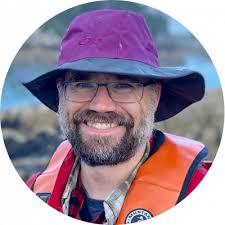Sessions
In the realm of aquaculture, sustainability is the cornerstone of progress and longevity. Our quest for innovative practices is driving a revolution in how we approach seafood production. Cutting-edge technologies like recirculating aquaculture systems (RAS) and integrated multitrophic aquaculture (IMTA) are redefining the industry's landscape. RAS optimizes water usage and minimizes waste by recycling water within closed systems, ensuring a controlled environment for fish growth. IMTA takes sustainability a step further by combining multiple species in a symbiotic relationship, where waste from one species becomes nutrients for another, reducing environmental impact. Additionally, advancements in feed formulation, such as plant-based and insect-based feeds, are reducing reliance on wild-caught fish for feed, promoting a more balanced ecological footprint. Embracing these innovations, coupled with stringent environmental monitoring and responsible farming practices, paves the way for a thriving and sustainable aquaculture industry that meets global seafood demands while preserving our oceans for generations to come.
Marine biodiversity encompasses a vast array of life forms, from microscopic plankton to majestic whales, all playing interconnected roles in the ocean's intricate ecosystems. However, this biodiversity faces numerous threats, including overfishing, habitat destruction, pollution, and climate change. Effective conservation and management strategies are vital to safeguarding these diverse ecosystems and the services they provide. Conservation efforts often focus on establishing marine protected areas (MPAs) to preserve critical habitats, such as coral reefs, seagrass beds, and mangroves. These areas act as sanctuaries where marine life can flourish undisturbed, promoting species recovery and maintaining ecosystem resilience. Additionally, sustainable fisheries management is essential to prevent the depletion of fish stocks. This involves implementing science-based quotas, reducing bycatch, and promoting selective fishing practices that minimize environmental impact. Education and awareness are also crucial aspects of marine biodiversity conservation. Engaging local communities, stakeholders, and policymakers in understanding the importance of preserving marine ecosystems fosters a collective commitment to sustainable practices. By integrating science, policy, and community engagement, we can effectively conserve and manage marine biodiversity, ensuring the health and productivity of our oceans for generations to come.
Fisheries management is a critical aspect of sustainable resource utilization in our oceans. Effective strategies and innovative technologies play a pivotal role in ensuring the long-term viability of fisheries while minimizing environmental impact. One key strategy is the implementation of science-based quotas and catch limits to prevent overfishing and maintain fish stocks at sustainable levels. This involves regular assessments of fish populations, monitoring fishing activities, and adjusting regulations accordingly. Selective fishing techniques, such as using gear modifications and implementing size and species limits, help reduce bycatch and minimize the impact on non-target species. Additionally, promoting responsible fishing practices, such as avoiding fishing during spawning seasons and protecting vulnerable habitats, contributes to sustainable fisheries management. Technological advancements have also revolutionized fisheries management. Tools like satellite monitoring, acoustic tagging, and electronic monitoring systems enable real-time data collection on fishing activities, stock assessments, and compliance with regulations. Artificial intelligence and machine learning algorithms further enhance data analysis and decision-making processes, improving the accuracy and efficiency of fisheries management strategies. Collaboration between governments, fisheries managers, scientists, and stakeholders is essential for successful fisheries management. By integrating science, technology, and sustainable practices, we can ensure the health and resilience of marine ecosystems while meeting the needs of present and future generations reliant on seafood resources.
Ecosystem services in aquatic environments are the invaluable benefits that ecosystems provide to humans and the environment. These services are fundamental for sustaining life, supporting biodiversity, and maintaining ecological balance in aquatic ecosystems. One crucial ecosystem service is the regulation of water quality. Aquatic ecosystems, such as wetlands, mangroves, and coral reefs, act as natural filters, purifying water by removing pollutants and excess nutrients. This purification process not only benefits aquatic life but also provides clean water for human consumption and agricultural use. Another vital service is the provision of food and resources. Aquatic ecosystems support diverse fisheries, supplying a significant source of protein for millions of people worldwide. Additionally, these environments contribute to the production of medicinal compounds, biomaterials, and recreational opportunities, enhancing human well-being. Ecosystems also play a crucial role in climate regulation. Coastal habitats like salt marshes and seagrass beds sequester carbon dioxide, mitigating climate change impacts. They also provide coastal protection by absorbing wave energy and reducing erosion, safeguarding communities and infrastructure. Furthermore, aquatic ecosystems offer cultural and aesthetic values, inspiring art, spirituality, and recreation. Preserving these ecosystems is essential for maintaining biodiversity, sustaining livelihoods, and ensuring the resilience of our planet in the face of environmental challenges. Recognizing and valuing ecosystem services in aquatic environments is key to fostering conservation efforts and promoting sustainable management practices for the benefit of both nature and society.
Freshwater fisheries play a crucial role in providing food security, livelihoods, and recreational opportunities for millions of people globally. Understanding current trends and future prospects is essential for sustainable management and conservation of freshwater fish resources. One notable trend is the increasing demand for freshwater fish as a source of protein. With global population growth and changing dietary preferences, there's a growing reliance on freshwater fisheries to meet nutritional needs. However, this demand poses challenges such as overfishing, habitat degradation, and water pollution, highlighting the need for responsible management practices. Technological advancements are shaping the future of freshwater fisheries. Innovations like aquaculture, recirculating aquaculture systems (RAS), and genetic improvement programs enhance fish production efficiency while minimizing environmental impacts. Sustainable aquaculture practices also offer opportunities for diversification and economic growth in rural areas. Climate change presents both challenges and opportunities for freshwater fisheries. Rising temperatures, altered hydrological patterns, and habitat loss affect fish populations and ecosystems. Adaptation strategies, such as habitat restoration, water conservation, and promoting resilient species, are crucial for mitigating these impacts and ensuring long-term sustainability. Collaborative efforts between governments, fisheries managers, scientists, and communities are essential for addressing current challenges and seizing future opportunities in freshwater fisheries. By integrating science-based management, sustainable practices, and stakeholder engagement, we can foster resilient freshwater ecosystems and secure the benefits they provide for generations to come.
Aquaculture innovation is driving a transformative shift in the way we produce seafood, meeting growing demand while addressing environmental and sustainability concerns. Emerging technologies and techniques are revolutionizing the aquaculture industry, paving the way for efficient, responsible, and resilient practices. One key innovation is the adoption of recirculating aquaculture systems (RAS). These closed-loop systems recycle water, minimize waste, and control environmental parameters like temperature and oxygen levels, optimizing fish growth while reducing water usage and pollution. Genetic improvement programs are another frontier in aquaculture innovation. Selective breeding, genetic selection, and biotechnology are used to develop disease-resistant, fast-growing, and more sustainable fish strains, enhancing productivity and reducing reliance on wild stocks. Nutrition is a critical aspect of aquaculture, and advancements in feed technology are transforming the industry. Sustainable feeds, such as plant-based and insect-based formulations, reduce dependency on fishmeal and fish oil, promoting a more balanced ecological footprint. Automation and digitalization are revolutionizing farm management and monitoring. Sensor technology, data analytics, and artificial intelligence optimize feeding regimes, water quality management, and disease detection, improving efficiency and decision-making processes. Collaborative research, investment in infrastructure, and knowledge sharing are essential for scaling up these innovations and ensuring their widespread adoption. By harnessing the power of aquaculture innovation, we can meet global seafood demand sustainably, protect marine ecosystems, and support food security and economic development worldwide.
Marine conservation faces multifaceted challenges that require integrated solutions to safeguard our oceans' health and biodiversity. Pollution, overfishing, habitat destruction, climate change, and unsustainable resource use are among the primary threats to marine ecosystems. Pollution, including plastic debris, chemical contaminants, and nutrient runoff, poses serious risks to marine life and habitats. Addressing pollution requires improved waste management, reduced plastic consumption, and stricter regulations on industrial discharge. Overfishing and illegal, unreported, and unregulated (IUU) fishing are major concerns threatening fish stocks and marine biodiversity. Sustainable fisheries management practices, such as science-based quotas, habitat protection, and monitoring systems, are essential for preventing overexploitation and promoting fishery sustainability. Habitat destruction, including coastal development, coral reef degradation, and seabed mining, jeopardizes critical marine habitats. Conservation efforts must prioritize habitat protection, restoration, and marine protected areas (MPAs) to preserve biodiversity hotspots and ecosystem functions. Climate change exacerbates marine conservation challenges through ocean warming, acidification, sea level rise, and extreme weather events. Mitigation and adaptation strategies, such as reducing greenhouse gas emissions, enhancing resilience through ecosystem-based approaches, and implementing marine spatial planning, are vital for climate-resilient marine conservation. Education, public awareness, stakeholder engagement, and international cooperation are integral to addressing these challenges comprehensively. By implementing science-based policies, fostering sustainable practices, and empowering local communities, we can overcome the obstacles to marine conservation and secure a healthy, productive, and resilient ocean environment for present and future generations.
Fish farming techniques have evolved significantly, driven by technological advancements and the need for sustainable seafood production. These advances are transforming aquaculture practices, enhancing productivity, minimizing environmental impact, and meeting the growing demand for fish protein worldwide. One notable advancement is the development of recirculating aquaculture systems (RAS). These closed-loop systems recycle water, remove waste, and control environmental conditions, creating optimal conditions for fish growth while reducing water usage and pollution. Selective breeding and genetic improvement programs have also revolutionized fish farming. By selecting traits such as disease resistance, growth rate, and feed conversion efficiency, breeders can produce healthier, more efficient fish stocks that require fewer resources and inputs. Aquaponics is another innovative technique combining aquaculture with hydroponics, where fish waste is converted into nutrients for plant growth. This integrated system maximizes resource utilization, minimizes waste, and enhances overall sustainability. Precision aquaculture utilizes sensors, data analytics, and automation to monitor and optimize farm operations in real time. This technology improves feed efficiency, water quality management, and disease detection, increasing productivity and reducing environmental impact. Furthermore, sustainable feed formulations, such as plant-based and insect-based feeds, reduce reliance on wild fish stocks for feed ingredients, promoting a more balanced ecological footprint in fish farming. Overall, these advances in fish farming techniques are reshaping the aquaculture industry, making it more efficient, environmentally friendly, and capable of meeting global seafood demand while preserving marine ecosystems.
Aquatic ecosystems are dynamic and intricate systems characterized by complex interactions between living organisms and their environment. These ecosystems include freshwater habitats like lakes, rivers, and wetlands, as well as marine environments such as oceans, coral reefs, and estuaries. Understanding the dynamics and interactions within aquatic ecosystems is crucial for their conservation and sustainable management. One key aspect of aquatic ecosystems is biodiversity, which refers to the variety of life forms and species present in these environments. Biodiversity plays a fundamental role in ecosystem functioning, providing essential services like nutrient cycling, water purification, and food production. The dynamics of aquatic ecosystems are influenced by physical factors such as temperature, water flow, and nutrient availability. These factors shape habitat suitability, species distribution, and ecosystem productivity. Interactions within aquatic ecosystems are diverse and encompass predator-prey relationships, competition for resources, and symbiotic associations. These interactions influence population dynamics, community structure, and the resilience of ecosystems to environmental changes. Human activities, including pollution, habitat destruction, overfishing, and climate change, pose significant threats to aquatic ecosystems. Sustainable management approaches, such as ecosystem-based management, marine spatial planning, and conservation strategies, are essential for mitigating these threats and preserving the health and integrity of aquatic ecosystems. By studying the dynamics and interactions within aquatic ecosystems, we can gain insights into their resilience, vulnerability, and capacity to adapt to environmental changes. This knowledge is crucial for informed decision-making and effective conservation efforts to safeguard these vital ecosystems for future generations.
Inland aquaculture, also known as freshwater aquaculture, plays a significant role in meeting global seafood demand, providing livelihoods, and supporting food security. Its development and sustainability are crucial for ensuring continued growth and minimizing environmental impact. The development of inland aquaculture involves the cultivation of various freshwater species such as fish, shrimp, crayfish, and mollusks in ponds, tanks, and raceways. Advancements in aquaculture technology, including recirculating aquaculture systems (RAS), biofloc systems, and integrated aquaculture-agriculture systems, have enhanced productivity and efficiency while reducing environmental footprint. Sustainability in inland aquaculture encompasses several key aspects. Water management practices, such as efficient use, recycling, and conservation, are essential for minimizing water consumption and maintaining water quality. Nutrient management and waste reduction strategies, such as proper feed formulation, biofiltration, and sediment management, help mitigate pollution and eutrophication risks. Furthermore, promoting responsible aquaculture practices, such as good aquaculture practices (GAP), certification schemes, and traceability systems, ensures adherence to environmental standards, social responsibility, and food safety protocols. Community engagement, capacity building, and knowledge sharing are integral to sustainable inland aquaculture development. Empowering local stakeholders, supporting small-scale farmers, and fostering partnerships between government, industry, and academia contribute to the resilience and long-term viability of inland aquaculture. By embracing innovation, adopting sustainable practices, and fostering collaboration, inland aquaculture can continue to thrive, meet growing seafood demand, and contribute to food security while preserving freshwater ecosystems and biodiversity.
Marine aquaculture, also known as mariculture, presents significant opportunities for meeting the increasing demand for seafood and supporting coastal economies. However, it also faces notable challenges that require careful management and innovative solutions. One of the primary opportunities of marine aquaculture is its potential to increase seafood production sustainably. By cultivating marine species such as fish, shellfish, and seaweeds in offshore farms, mariculture reduces pressure on wild fish stocks and promotes food security. Marine aquaculture also offers economic benefits through job creation, income generation, and coastal development. It provides opportunities for small-scale farmers and coastal communities to diversify their livelihoods and participate in the blue economy. However, marine aquaculture is not without challenges. Environmental impacts, such as habitat degradation, nutrient pollution, and disease outbreaks, can occur if not managed properly. Escapes of farmed species and interactions with wild populations are also concerns for biodiversity and ecosystem health. Furthermore, regulatory frameworks, licensing processes, and stakeholder conflicts can hinder the development of marine aquaculture projects. Access to suitable sites, infrastructure, and financing are additional challenges that need to be addressed for sustainable growth of the industry. Addressing these challenges requires integrated approaches that prioritize environmental sustainability, social responsibility, and economic viability. Innovation in technology, such as offshore aquaculture systems, integrated multitrophic aquaculture (IMTA), and sustainable feed formulations, can help mitigate environmental impacts and improve efficiency in marine aquaculture operations. Collaboration between governments, industry, scientists, and communities is essential for navigating the opportunities and challenges of marine aquaculture. By promoting responsible practices, fostering innovation, and ensuring effective governance, marine aquaculture can contribute to global food security while safeguarding marine ecosystems for future generations.
Fisheries technology has significantly evolved to enhance efficiency and productivity in the fishing industry. These advancements are crucial for meeting global seafood demand sustainably while minimizing environmental impact. One of the key technologies driving efficiency is the use of satellite-based fisheries monitoring systems. These systems enable real-time tracking of fishing vessels, monitoring of fishing activities, and enforcement of regulations to prevent illegal, unreported, and unregulated (IUU) fishing. Fisheries also benefit from advancements in gear technology, such as selective fishing gear, turtle excluder devices (TEDs), and escape panels. These innovations reduce bycatch of non-target species, promote ecosystem health, and improve the overall sustainability of fishing operations. Aquaculture has also seen technological advancements that enhance productivity and reduce environmental footprint. Recirculating aquaculture systems (RAS), automated feeding systems, and genetic improvement programs are examples of technologies that optimize fish growth, feed efficiency, and disease management in aquaculture operations. Furthermore, digitalization and data analytics play a crucial role in fisheries management and decision-making. Integrated fisheries information systems, stock assessment models, and fishery management tools enable scientists and managers to assess fish stocks, set quotas, and implement sustainable management measures effectively. Overall, fisheries technology continues to evolve, offering opportunities to improve efficiency, productivity, and sustainability in both capture fisheries and aquaculture. By embracing these innovations and promoting responsible fishing practices, the fishing industry can contribute to food security, economic development, and environmental conservation.
Aquatic species encompass a vast array of life forms, from fish and shellfish to algae and microorganisms, each playing a crucial role in aquatic ecosystems' health and function. Understanding their diversity, promoting their health, and managing their populations are essential for maintaining ecosystem balance and sustainability. Diversity in aquatic species is a cornerstone of ecosystem resilience. Different species contribute to nutrient cycling, energy flow, and habitat structure, creating complex and interconnected food webs. Protecting biodiversity through habitat conservation, species conservation plans, and marine protected areas (MPAs) helps preserve these vital ecological functions. Ensuring the health of aquatic species is paramount for ecosystem stability and human well-being. Monitoring water quality, controlling pollution, and addressing habitat degradation are critical for maintaining species' health and preventing population declines or extinctions. Effective management of aquatic species involves science-based approaches, adaptive management strategies, and stakeholder engagement. Sustainable fisheries management practices, such as catch limits, gear restrictions, and habitat protection, promote healthy fish stocks and support fishing communities. In aquaculture, responsible practices, such as disease prevention, genetic improvement, and sustainable feed formulations, contribute to species' health and minimize environmental impact. Overall, promoting diversity, ensuring health, and implementing effective management strategies for aquatic species are fundamental for preserving aquatic ecosystems' integrity and supporting the services they provide to humans and the planet. Collaboration between stakeholders, scientific research, and informed decision-making are key to achieving these goals and promoting sustainable aquatic resource management.
Ecosystem health is a vital concept in environmental science, reflecting the overall condition and functioning of ecosystems. Assessing ecosystem health involves using indicators to evaluate various components, such as biodiversity, water quality, habitat integrity, and ecosystem services, to understand their status and trends over time. Biodiversity is a fundamental indicator of ecosystem health, representing the variety and abundance of species within an ecosystem. High biodiversity indicates resilience and stability, while declines may signal environmental stressors or habitat degradation. Water quality indicators assess the physical, chemical, and biological characteristics of aquatic environments. Parameters like pH, dissolved oxygen, nutrient levels, and pollutant concentrations provide insights into water health and potential impacts on aquatic life and human uses. Habitat integrity indicators evaluate the condition and connectivity of natural habitats, including forests, wetlands, and coral reefs. Healthy habitats support diverse species, maintain ecological processes, and provide essential services like carbon sequestration, flood control, and erosion prevention. Ecosystem services indicators quantify the benefits humans derive from ecosystems, such as food provision, water purification, climate regulation, and cultural values. Monitoring these services helps assess ecosystem resilience, sustainability, and the effectiveness of conservation and management efforts. Integrated approaches to ecosystem health assessment combine multiple indicators to provide a comprehensive understanding of ecosystem condition and trends. These assessments inform decision-making, conservation strategies, and policy development to promote ecosystem resilience, biodiversity conservation, and sustainable resource management.
Sustainable fisheries are essential for maintaining healthy marine ecosystems, supporting livelihoods, and ensuring food security. Effective policies and practices are crucial for achieving sustainability in fisheries management. One key policy approach is the implementation of science-based fisheries management plans. These plans set catch limits, regulate fishing gear and methods, and establish marine protected areas (MPAs) to conserve critical habitats and species. Another important policy is the promotion of responsible fishing practices through certification schemes, eco-labeling, and traceability systems. These initiatives incentivize sustainable fishing practices, reduce bycatch and discards, and encourage market demand for responsibly sourced seafood. Engaging stakeholders, including fishers, scientists, policymakers, and communities, is essential for developing and implementing sustainable fisheries policies. Participatory approaches, stakeholder consultations, and collaborative decision-making processes enhance policy effectiveness and stakeholder buy-in. Innovative practices also play a crucial role in sustainable fisheries management. These include ecosystem-based fisheries management (EBFM), which considers ecological interactions and ecosystem dynamics in decision-making, and rights-based management systems, such as individual transferable quotas (ITQs), which allocate fishing rights based on conservation objectives and economic efficiency. Furthermore, investing in research, monitoring, and enforcement capacities strengthens fisheries management effectiveness and compliance with regulations. Enhanced data collection, stock assessments, and surveillance technologies improve decision-making, ensure accountability, and promote adaptive management in response to changing environmental conditions. Overall, a combination of robust policies, innovative practices, stakeholder engagement, and effective governance is essential for achieving sustainability in fisheries, conserving marine ecosystems, and securing the benefits they provide for present and future generations.
Market Analysis
Aquaculture and fisheries are integral components of the global food industry, providing essential protein sources and economic opportunities. This market analysis delves into the worldwide trends and specific landscape in Thailand, highlighting upcoming growth opportunities in the aquaculture sector.
Global Aquaculture and Fisheries Market Overview
The global aquaculture and fisheries market has witnessed significant growth in recent years, driven by factors such as increasing seafood consumption, technological advancements, and sustainability initiatives. According to the Food and Agriculture Organization (FAO), aquaculture accounts for more than 50% of global fish consumption, underlining its importance in the seafood industry. One of the key trends shaping the global market is the focus on sustainability. Consumers, retailers, and governments are increasingly emphasizing responsible fishing practices, eco-certifications, and traceability in seafood supply chains. Initiatives like the Aquaculture Stewardship Council (ASC) and Marine Stewardship Council (MSC) promote sustainable aquaculture and fisheries management worldwide. Technological innovations play a crucial role in enhancing efficiency and productivity in the aquaculture sector. Recirculating aquaculture systems (RAS), genetic improvement programs, and precision aquaculture techniques improve production yields, reduce environmental impact, and ensure resource efficiency. Furthermore, market diversification is evident, with aquaculture expanding beyond traditional fish species to include shrimp, mollusks, seaweeds, and ornamental fish. This diversification caters to diverse market preferences, enhances product variety, and opens up new market opportunities. International trade is a significant aspect of the aquaculture and fisheries market, with major exporters like China, Norway, and India meeting the demand for seafood in key importing regions such as the United States, European Union, and Japan. Global trade dynamics influence market trends, prices, and supply chains, shaping the overall market landscape.
Aquaculture and Fisheries Market in Thailand
Thailand is a prominent player in the global aquaculture and fisheries market, renowned for its seafood exports, aquaculture production, and vibrant fishing industry. The country's aquaculture sector encompasses a wide range of species, including shrimp, tilapia, catfish, and pangasius, catering to both domestic and international markets. Shrimp farming is a significant segment of Thailand's aquaculture industry, with the country being a leading exporter of vannamei and black tiger shrimp. Thai shrimp farming practices incorporate advanced production techniques, stringent quality control measures, and adherence to international standards, ensuring product quality and market competitiveness. Aquaculture innovation is a key driver of growth in Thailand's aquaculture sector. The adoption of technologies such as recirculating aquaculture systems (RAS), biofloc systems, and sustainable feed formulations enhances production efficiency, reduces environmental impact, and meets market demands for sustainable seafood. Government support and regulatory frameworks also play a vital role in shaping Thailand's aquaculture and fisheries sector. Policies promoting sustainable aquaculture practices, food safety standards, and export competitiveness contribute to the industry's growth and market positioning. Despite its strengths, Thailand's aquaculture sector faces challenges such as disease outbreaks, environmental concerns, and market competition. However, the industry continues to evolve through innovation, research collaborations, and market diversification strategies.
Upcoming Growth Opportunities in Aquaculture
The future of aquaculture presents promising growth opportunities driven by several factors:
Increasing Seafood Demand: Global population growth, rising incomes, and shifting dietary preferences contribute to the growing demand for seafood. Aquaculture plays a crucial role in meeting this demand sustainably, offering opportunities for production expansion and market penetration.
Sustainability Imperatives: Environmental concerns and consumer preferences for sustainable products drive the adoption of eco-certified seafood and responsible aquaculture practices. Producers that prioritize sustainability gain a competitive edge and access to premium markets.
Technological Advancements: Continued innovations in aquaculture technology, including automation, data analytics, and genetic improvement programs, enhance production efficiency, disease management, and environmental stewardship.
Market Diversification: Aquaculture can explore opportunities in value-added products, niche markets, and alternative species to diversify revenue streams and address market trends and preferences.
International Trade Dynamics: Access to global markets through trade agreements, export promotion initiatives, and market intelligence enables aquaculture producers to capitalize on international demand and expand their market reach.











